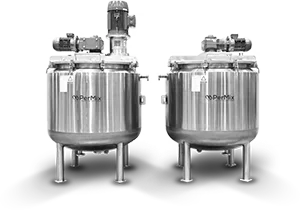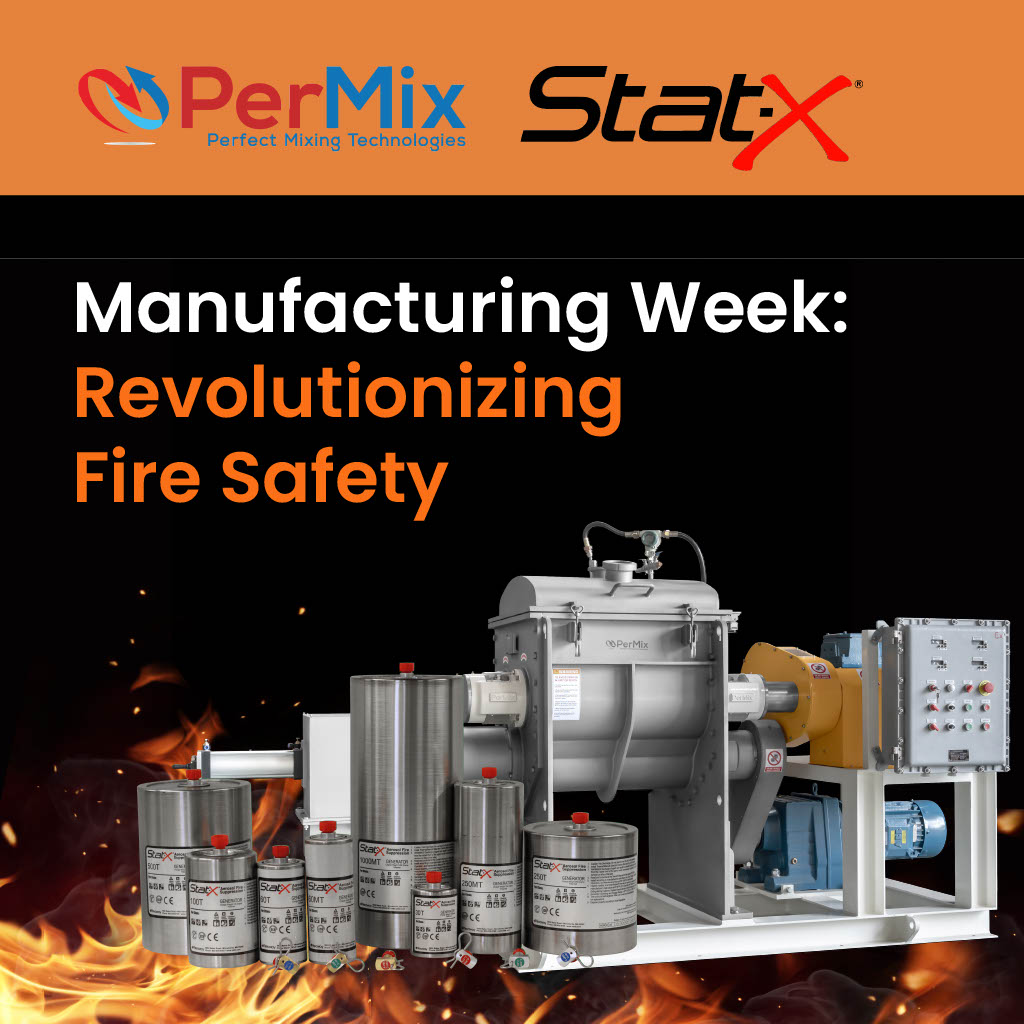Industrial Mixers
PerMix News & Updates



National Manufacturing Week — by PerMix Americas
Manufacturing that touches energetic materials—propellants, detonable powders, specialized pyrotechnics—lives on a razor edge between precision engineering and absolute caution. The rewards for doing it right are real: mission-critical products, dependable performance, and technological progress. The risk for doing it wrong is catastrophic.
When StatX approached PerMix to design a mixer for their fire-suppression propellant manufacturing line, they didn’t just want “better mixing.” They needed a partner who understood the full hazard lifecycle—materials, ignition sources, regulatory scrutiny, and emergency response—and could deliver a practical system that made production safer, easier to certify, and less stressful for operators.
Here’s what manufacturers like StatX face, and how PerMix answers the call.
Working with energetic powders and propellants brings a distinct set of engineering and operational challenges:
PerMix’s philosophy for hazardous-materials projects is straightforward: engineer away hazard where possible, isolate hazard where not, and make the remaining tasks simple and auditable.
We designed a sealed mixing enclosure tailored to StatX’s throughput and material characteristics. Sealing reduces fugitive dust emissions, simplifies ventilation design, and makes inerting or gas purging practical. All electrical and motion components were specified to meet relevant explosion-proof/ATEX requirements; nothing “off the shelf” that didn’t have the right safety pedigree.
Rather than describe procedures, it’s important to note that controlling the atmosphere around energetic powders materially reduces ignition probability. PerMix engineered the mixer interfaces to accept inert-gas purging and integrate with StatX’s gas-management systems, while providing fail-safe interlocks so the mixer cannot operate under unsafe conditions.
PerMix provided integrated dust-tight loading and discharge ports, and designed the mixer to interface seamlessly with StatX’s HEPA extraction and closed material-handling conveyors. This minimizes airborne particulate and guards downstream processes and personnel.
Where elimination isn’t possible, we engineered for mitigation: structural containment, designated weak-vent paths, and suppression system integration points so that, should an event occur, its effect is controlled and directed away from personnel and critical equipment. These are design choices made by engineers who have watched risk maps and insurance claims; they are practical, not theoretical.
PerMix delivered a control system with clear state logic and layered interlocks: machine can only run when environmental sensors, purge sequence, and door status are all green. We kept the operator interface straightforward and provided audit logging for traceability—helpful for both internal QA and external auditors.
A safe machine is only as good as the team that operates it. PerMix provided thorough operator training, written SOPs, preventative maintenance schedules, and rapid service pathways. We also documented the design basis so compliance officers and certifying bodies can understand what was built and why.
StatX reported immediate benefits: reduced downtime from nuisance events, cleaner production, and confidence during audits and inspections. Safety engineering doesn’t simply reduce risk—it stabilizes operations, which improves uptime and long-term cost of ownership.
Working with energetic materials isn’t for the faint of heart, but it’s not a black hole either. The right combination of sealed equipment, atmosphere control, dust containment, certified components, and human-centric operations reduces hazard to acceptable levels and enables vital industries to operate responsibly.
At PerMix we treat safety engineering as an equal partner to mixing performance. If your line is producing materials that pose elevated risks, think in three dimensions: process, enclosure, and people. Engineering the process is vital, but enclosing the hazard and empowering your people turns good machines into safe, certifiable systems.
Want a compliance-ready review of your mixing line? PerMix offers confidential engineering consultations for hazardous-materials applications—no operational secrets exchanged, just pragmatic safety design and documentation to help you meet regulators and protect your team.
PerMix Americas — engineering safety into performance.
